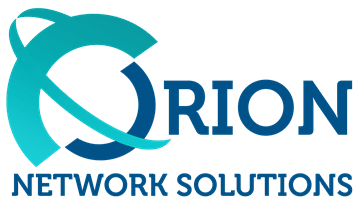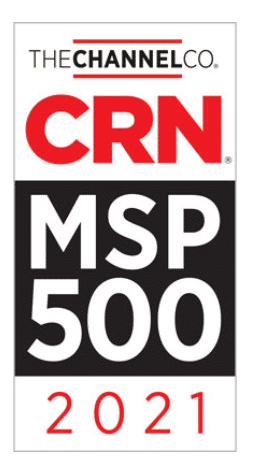How Microsoft SharePoint Boosts Modern Organizations’ Success
In today’s rapidly evolving business landscape, organizations need powerful tools to stay ahead of the competition and streamline operations. Microsoft SharePoint is a tool designed to help modern organizations achieve great heights by providing a versatile platform for collaboration, communication, and content management. As a widely used platform, SharePoint serves more than 200,000 organizations globally, paving the way for innovation and improved productivity.
At its core, SharePoint enables teams to collaborate effectively, ensuring seamless communication and effortless document sharing. Its robust document management capabilities make it a standout offering, providing users with features like version control, check-in/check-out, and co-authoring. Moreover, SharePoint’s modern experience is designed to be compelling, flexible, and performant, making it an ideal choice for organizations looking to capitalize on the latest innovations and drive success.
Key Takeaways
- SharePoint provides a comprehensive platform for collaboration, communication, and content management in modern organizations.
- With its robust document management capabilities, SharePoint enhances productivity and fosters innovation in the workplace.
- The modern experience in SharePoint offers flexibility, performance, and a compelling user interface, helping organizations reach their full potential.
Overview of SharePoint
SharePoint is a powerful, web-based content management system designed to empower modern organizations. It allows organizations to store, share, and collaborate on various types of content, including documents, images, and multimedia files. The platform natively integrates with other Microsoft 365 apps and provides automation capabilities, streamlining workflows and increasing efficiency.
We appreciate the compelling, flexible, and performant nature of SharePoint, as it greatly contributes to businesses’ overall productivity. SharePoint’s performance is influenced by several components, such as search, lists, and document libraries. These factors play a role in delivering a satisfying user experience while enhancing the organization’s performance metrics.
One notable aspect of SharePoint is its strong document management capabilities. Organizations can create document libraries, folders, and metadata structures to logically organize and categorize content. With features like version control, check-in/check-out, and document co-authoring, SharePoint ensures teams can access essential information while minimizing errors.
Some key benefits and features of SharePoint include:
- Integration with Microsoft 365 apps such as Teams, Outlook, and OneDrive
- Automation of routine tasks through Power Automate
- Customization with dynamic SharePoint site templates and themes
- Enhanced collaboration with external users through secure sharing
- Improved filtering and bulk editing in modern SharePoint lists and libraries
Collaboration and Communication
Team Sites and Communities
Effective collaboration and communication are crucial to achieving business success in modern organizations. SharePoint helps us create team sites and communities to facilitate this need. Team sites are a central hub for sharing resources, managing projects, and collaborating on documents. These sites are customizable, allowing us to design them according to our organization’s unique requirements and preferences.
Here are some notable features of SharePoint team sites:
- Document Libraries: Efficiently organize, manage, and store various types of documents to support collaboration and version control.
- Calendars: Manage team events, meetings, and deadlines – synchronize with Outlook for enhanced accessibility and synchronization.
- Task Lists: Organize, assign, and track tasks, enabling teams to stay on top of project deadlines and deliverables.
- Discussion Boards: Encourage open communication through discussion boards, fostering conversation and knowledge sharing among team members.
Real-Time Co-Authoring
SharePoint’s real-time co-authoring feature enables teams to collaborate on documents seamlessly, regardless of their location. Working simultaneously on Word, Excel, or PowerPoint files stored within SharePoint ensures that every team member is on the same page, reducing duplication of efforts and promoting efficiency. This feature also maintains document versioning, allowing us to easily track changes and revert to previous versions if necessary.
Here are some key benefits of real-time co-authoring in SharePoint:
- Increased Productivity: Team members can work on documents simultaneously, saving time and effort.
- Enhanced Communication: Real-time co-authoring promotes open dialogue and fosters idea generation.
- Version Control: SharePoint automatically handles versioning, preventing document conflicts and data loss.

Content Management
As a cornerstone of SharePoint, content management is crucial in helping modern organizations reach greater heights. This section will discuss two critical components of SharePoint’s content management strategy: Document Libraries and List Management.
Document Libraries
Document Libraries are essential for storing, organizing, and collaborating on various files within SharePoint. We can create a well-structured content storage system by leveraging libraries, folders, and metadata to categorize our documents logically. With version control, team members can easily track file updates, maintain a complete revision history, and restore previous versions if necessary. Furthermore, the check-in/check-out feature ensures that team members are not overwriting each other’s work.
SharePoint’s built-in document co-authoring feature allows multiple users to work on the same document simultaneously. Additionally, SharePoint provides Enterprise Content Management (ECM) capabilities, enabling us to centrally store and manage content while improving productivity and collaboration across our organization.
List Management
List management in SharePoint is a powerful feature that allows us to organize and manage structured data efficiently. Lists can be created for various purposes, such as task management, tracking issues, making announcements, and managing event calendars. To further enhance our list management capabilities, we can utilize columns to create various data types, views to filter and sort items, and groups to categorize list items.
Here are a few examples of built-in list templates in SharePoint:
- Task List: Assign and track tasks with due dates and status information.
- Announcements: Share news, updates, or other important information with colleagues.
- Issue Tracking: Manage issues within a project or team.
- Calendar: Schedule and view upcoming events and meetings.
Customization and Integration
Microsoft SharePoint helps modern organizations achieve great new heights through its extensive customization and integration capabilities. By allowing businesses to tailor their SharePoint experience according to their specific requirements, SharePoint enables improved collaboration and productivity across teams.
Site Templates
One significant feature of SharePoint is its customizable site templates. These templates are the foundation for creating and organizing content that matches each organization’s unique workflow and requirements. Organizations can choose from various built-in templates or create their own from scratch, ensuring a consistent and professional appearance across sites.
- Team Site: This template facilitates easy collaboration among team members on projects, documents, and information sharing.
- Communication Site: Ideal for sharing news, updates, and information across an organization, this template helps organizations keep everyone informed and engaged.
- Document Center: With advanced document management capabilities, this template focuses on organizing, managing, and sharing large volumes of documents.
APIs and Integration
Another key strength of SharePoint is its ability to integrate easily with other applications and services, creating a seamless environment for managing and accessing information. Using APIs (Application Programming Interfaces) allows organizations to connect SharePoint with various other tools, enhancing productivity and consolidating data management.
- PowerApps and Flow Integration: SharePoint Online offers one-click integration with PowerApps and Flow, allowing users to create and manage custom applications and automate tasks directly within SharePoint.
- Microsoft 365 Integration: SharePoint is deeply integrated with the Microsoft 365 suite, including tools like Microsoft Teams, Outlook, and OneDrive, fostering a cohesive and efficient work environment.
- Third-Party Integrations: Through its REST APIs and support for other web technologies, SharePoint can also connect with numerous third-party applications, extending its capabilities to include tools like Salesforce, Adobe Creative Cloud, and more.
Mobility and Remote Access
One of the most significant ways Microsoft SharePoint propels modern organizations to new heights is by promoting employee mobility and remote access. As the workplace continues to evolve, employees need to access critical business applications at any time and from any location. SharePoint addresses this need, enabling organizations to fully embrace modern work trends, such as remote work and bring-your-own-device (BYOD) initiatives.
We believe that SharePoint’s robust capabilities are crucial in fostering collaboration, particularly among geographically dispersed teams. For instance, SharePoint offers:
- Document co-authoring: Thanks to real-time collaboration features, employees can simultaneously work on the same document, regardless of location.
- Version control: This allows teams to track changes and maintain a complete history of all document revisions, ensuring that all members are on the same page, regardless of time zones.
- Check-in/check-out functionality: This feature helps prevent version conflicts by allowing users to work on a document exclusively while notifying others when the document is available for editing.
Security and Compliance
As we work with modern organizations, we understand that security and compliance are paramount. These factors are essential in gaining trust and confidence while using Microsoft SharePoint to achieve new heights in business. In this section, we will discuss two critical aspects of security and compliance- Access Control and Data Loss Prevention.
Access Control
In SharePoint, we provide advanced access policies to ensure secure collaboration among team members. Access policies help organizations manage user permissions and restrict information access to authorized personnel only.
Features of Access Control:
- Information Barriers: Designed for highly regulated industries, we offer information barriers to show compliance controls are in place. These barriers prevent insider trading, allowing organizations to adhere to compliance regulations such as FINRA- an essential factor in the financial sector.
- Role-based access control (RBAC): SharePoint offers RBAC capabilities, allowing administrators to assign permissions and access levels according to each user’s role and responsibilities.
Data Loss Prevention
Our Data Loss Prevention (DLP) policies extend beyond Office documents to protect more significant portions of a company’s digital estate. Many organizations store valuable information, such as PDFs and images, that require equal protection and governance.
Elements of Data Loss Prevention:
- Microsoft Purview: Current Microsoft Purview compliance policies within SharePoint and OneDrive protect not only Office documents but also PDFs and images, essential for maintaining the integrity of an organization’s digital estate.
- Security Controls: We continually enhance and implement comprehensive security controls in SharePoint and OneDrive that are designed to safeguard content and maintain overall compliance.
Business Process Automation
In today’s competitive business environment, we rely on efficient ways to improve our processes and boost productivity. One such solution that many modern organizations are leveraging is Microsoft SharePoint. This section will explore how SharePoint’s Business Process Automation capabilities, such as workflow creation and form services, enable businesses to reach new heights.
Workflow Creation
SharePoint’s Power Automate feature enables us to create automated workflows to streamline our complex processes. By connecting with various third-party systems, our methods can be more agile and responsive to change. A key advantage of this feature is the intuitive visual designer, so crafting custom workflows becomes a breeze even for non-developers. Here’s a brief example of what can be automated:
- Document Management: Automate document review, approval processes, and version control.
- Task Alerts: Generate automated email alerts for task assignments and deadlines.
- Employee Requests: Streamline the management of vacation requests, travel requisitions, and expense reporting.
Besides improving efficiency, these automated workflows can significantly reduce manual errors and ensure more accurate, timely execution of tasks.
Form Services
Another essential aspect of SharePoint’s Business Process Automation is its Power Apps feature, which allows us to create customized forms and mobile applications based on our SharePoint data. These forms and apps enable us to efficiently collect, manage, and track critical business data. The list below highlights a few uses of Power Apps in SharePoint:
- Customized Forms: Create tailored forms to collect specific information for project proposals or client onboarding.
- Data Tracking: Develop centralized databases to track our project progress, milestones, and accomplishments.
- Mobile Applications: Build mobile apps to access our SharePoint data on the go, promoting remote collaboration.
By combining Power Automate and Power Apps, we can design versatile solutions to help our organization stay ahead of the competition and foster improved team collaboration. The ability to create powerful workflows and forms with SharePoint offers our business a competitive advantage and sets the foundation for growth and success.
Search and Discovery
In modern organizations, having a fast and effective search system is crucial for productivity. SharePoint excels in this area by optimizing search and enhancing content discovery.
Search Engine Optimization
SharePoint’s search engine is designed to be compelling, flexible, and performant. Many factors influence the search engine’s performance and other components like lists and document libraries (source). This allows for a balanced and optimized search experience for users.
Furthermore, SharePoint allows administrators to configure search settings and enhance the relevancy of search results in response to user queries. Here are a few ways we can optimize search in SharePoint:
- Make content searchable and crawlable to get it into the search index
- Help users search for content across Microsoft 365 and on-premises SharePoint Server simultaneously
Content Discovery
SharePoint promotes content discovery through several means. One significant aspect is the presentation of search results. By displaying results visually appealingly, finding the desired content (source) is easier.
We can improve content discoverability by:
- Implementing effective navigation, site hierarchy, and taxonomy
- Ensuring proper security and access to content
- Complying with your organization’s content regulations
Additionally, SharePoint’s integration with Office 365 Groups, team sites, and Microsoft Teams further enhances content discovery by allowing users to collaborate and share relevant information efficiently ([source]).
Insights and Analytics
Organizations must utilize every tool to gain insights and make data-based decisions in today’s data-driven world. SharePoint is an excellent platform to facilitate this process, helping modern organizations reach new heights.
One of the key aspects of SharePoint that sets it apart is its integration with Power BI, a powerful analytics and visualization tool. With Power BI, we can:
- Create rich, interactive reports and dashboards
- Connect to multiple data sources
- Share and collaborate on reports within SharePoint
By combining the capabilities of SharePoint and Power BI, we can offer more comprehensive insights and streamlined decision-making processes for our teams.
Another strength of SharePoint lies in its extensive search capabilities. Our organization can benefit from SharePoint’s efficient search engine, which includes:
- Content indexing, ensuring all relevant information is easily accessible
- Metadata and keyword search, helping to pinpoint specific documents or sources
- Personalized search experience, tailoring results based on an individual’s role and activities
Finally, the integration of artificial intelligence (AI) into SharePoint enhances our analytical capabilities even further. AI allows for:
- Advanced text recognition and analysis
- Improved automation and workflow efficiency
- Intelligent recommendations based on usage patterns
Training and Support
Microsoft SharePoint has come a long way in enhancing the collaboration and productivity of modern organizations. Proper training and support are crucial in making the most of this powerful platform. This section will discuss the various training resources and support options for SharePoint users.
Microsoft provides a comprehensive set of SharePoint video training resources that cater to the needs of both beginners and advanced users. These training courses range from basic navigation and common tasks to more advanced features and integrations with other Office 365 applications. Users can easily follow the step-by-step tutorials to gain expertise in various aspects of SharePoint.
Another important aspect of SharePoint training is the SharePoint Help and Learning platform. This platform can be accessed via the support.microsoft.com website. The SharePoint Help and Learning platform offers a vast repository of articles, guides, and instructional materials on various SharePoint functionalities, including managing sites, working with document libraries, and connecting organizations through hub sites.
SharePoint’s modernization also brings about the need for organizations to adapt to the new features. To enable this smooth transition, knowledge resources like the Complete Guide to SharePoint Modernization by KnowledgeLake provide valuable insights for organizations migrating to SharePoint Online. This guide covers the essential aspects of modern SharePoint, including integration with Office 365 groups, Teams, and various applications.
Besides the self-guided training materials, many organizations also opt for instructor-led SharePoint Online user training. These training sessions can be customized to meet an organization’s specific needs, ensuring that employees gain practical knowledge and the ability to apply SharePoint functionality in real-world scenarios.










